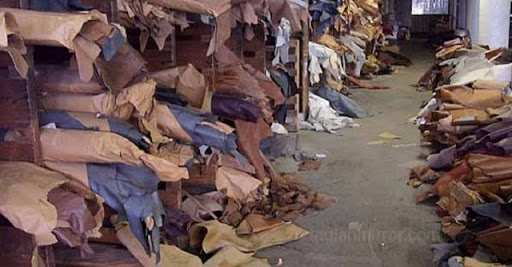Opportunities await Zim leather in AfCTA
Africa’s leather industry presents huge opportunities for Zimbabwean firms, with the sector expected to expand to US$2,5 billion by 2030 from the current US$450 million 2030.
Zimbabwe’s leather industry, already on a recovery path, could use the African Continental Free Trade Area to unlock the potential, Industry and Commerce Minister Dr Sekai Nzenza told The Herald Finance & Business.
Zimbabwe enjoys a competitive advantage of the leather value chain given its solid livestock and wildlife base
In 2021, the Government launched the Zimbabwe Leather Sector Strategy (2021-2030) in Bulawayo, which seeks to bring together all the value chain players in the industry with the long term objective of promoting export of value-added products such as finished footwear, garments and other leather related goods.
“The strategy will go a long way in ensuring that the leather industry, which is already on a recovery path, undergoes structural transformation along the value chain, and becomes one of the biggest employers in the country bolstered by the country’s competitive livestock and crop production,” said Dr Nzenza.
The strategy would encourage more domestic production of leather goods and hence increased exports and generation of foreign currency, with Comesa estimating that the industry would balloon to US$2,5 billion from US$450 million.
A vibrant leather sector has direct positive spin-offs for Zimbabwe’s industrialisation drive and can be a major contributor to the country’s gross domestic product (GDP) as well as providing decent livelihoods for the communities.
The leather sector in Africa used to dominate the global market, with some countries being awarded the first franchise to manufacture Nike products and other international brands such Adidas, Puma and North Star.
Until 2000, Zimbabwe used to produce about 17 million pairs of shoes per annum, of which four million had leather uppers.
However, by 2011, shoe production had plummeted to one million pairs per annum.
Dr Nzenza said the Government had been engaging the private sector to “better prepare and brace themselves for the AfCFTA”, which is a potential game changer for local firms.
“There is no doubt that Zimbabwean companies will benefit immensely from the trade pact, which will present immense opportunities for local businesses to diversify exports as well as open better access to raw materials from the rest of Africa,” said Dr Nzenza.
The World Bank has estimated that the successful implementation of the AfCFTA has the potential to add US$450 billion to Africa’s GDP by 2030.
In addition, Africa’s exports are expected to increase by US$560 billion, mostly in the manufacturing sector.
“It is against this background that Zimbabwean companies have been urged to make their products more competitiveness, so that they are able to penetrate the intra-continental export markets, which is currently dominated by commodities and low-value-added products, to include higher-value-added products that yield higher returns.
“This will therefore increase their exports earnings and generate the much needed foreign currency needed for retooling,” said Dr Nzenza.-The Herald











